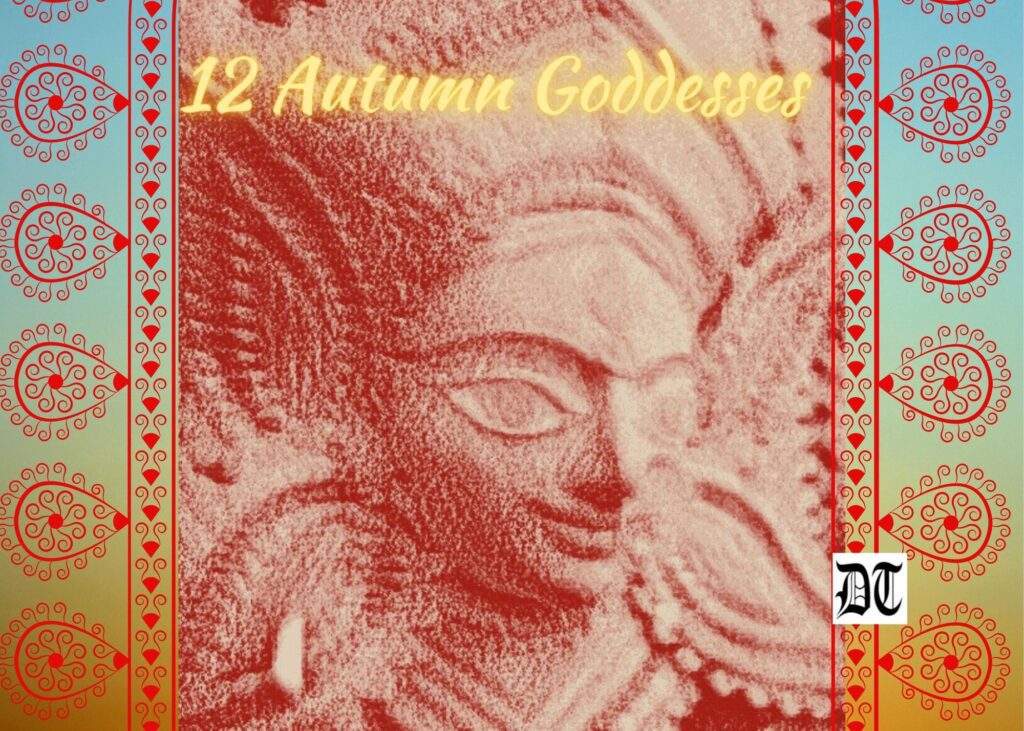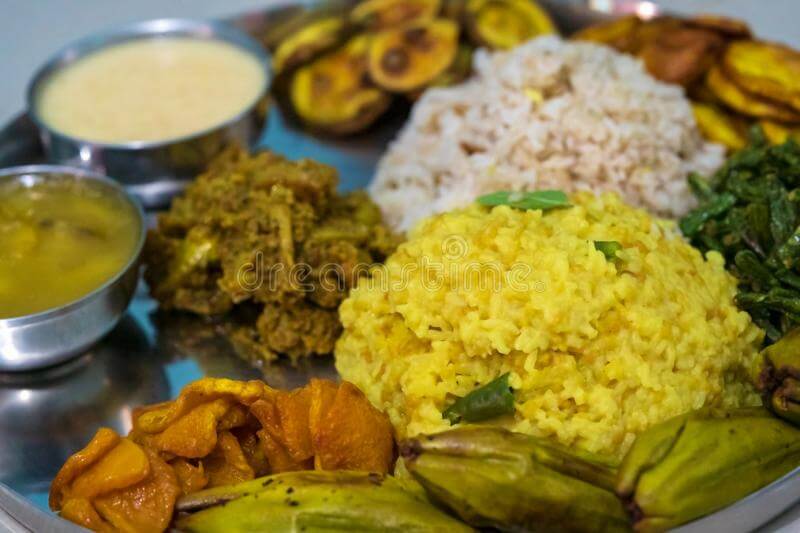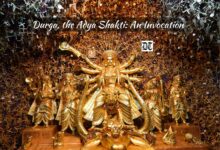Eyes closed, each of us disappears into our own consciousness where we perhaps see a beloved departed parent or remember a past when they stood above us uttering these same words after shoving a crumpled flower and a bael leaf into our small fists. Chennai-based Sumita gives us an overview of the Durga Puja and its nitty-gritty in the special feature, exclusively for Different Truths.

My identity as a Bengali is ‘Probasi’. Meaning I belong to a diaspora that has settled abroad – beyond the borders of West Bengal. When we visit Kolkata, the locals recognise us as Probasis with an amused sneer. Our accent, the way we carry ourselves, our peculiar naiveté gives us away. Yet, at heart, we are all children of Bengal. When the mother of all festivals, Durga Puja, makes her grand entrance annually, the same nostalgia fills us – memories of our roots and the joy of celebrating friendships and family.
Preparation for the puja starts months in advance. Private Puja in well-to-do homes still happens as these did many centuries back. The Barowari, or ‘twelve friends’, appeared around mid-eighteenth century, initiated by twelve friends who collected donations to hold a community puja. Thus developed locality based ‘Parar Pujo’. Today, almost every lane in Kolkata celebrate their own five days of rituals and carnival.
Bengalis pride themselves on their creativity and talents, and these five days offer a platform to showcase most arts. Every year, each puja association tries to come up with a unique concept for decoration and scale up from the previous year. Artistry peaks architecturally, sculpturally and through several 2D forms, not the least of which is ‘alpona’, the traditional auspicious painting on the ground, of sweeping florets and leaflets amidst variations of typical motifs like the mango shaped paisley. In news, this year is the alpona created by three hundred students from The Government Art College, painted on a long stretch of Lake Road near the Samaj Sebi Sangha Puja. Another Puja raising awe for their opulence is Sribhumi. Their protimas (idols) are decked in 12 kg of gold worth around four and a half crore rupees.
Durga Puja is obviously not just about the visual extravaganza. The important responsibility of prayers and rituals continue under the aegis of pujaris (priests). They are ably supported by a cast of women, who gather in batches at the crack of dawn to arrange all the accouterments necessary for the rituals. Their missions vary from sorting flowers – the garlands go on the protimas, and loose flowers, petals, Tulsi and Bael leaves go into bins in preparation for Pushpanjali; to arranging food and grocery – fruits, vegetables, grains, spices, oils and ghee, sweets, etc. – at the feet of the protimas; to counting out 108 tri-bladed ‘Dubbo’(a kind of grass) and 108 grains of rice amongst other less painful countable items; to preparing and distributing prasad – cutting fruits, mixing soaked rice and grated coconut and sweets offered during the rituals; to priming the lamps, keeping a continuous supply of lit incense sticks and lighting and maintaining the ‘Dhunuchi’ (keeping this terracotta chalice smoking with aromatic camphor and coir is definitely an art), and so on so forth till midnight, when the last batch of women clean up, sort and maintain inventories in preparation for the next day. Durga Puja, the celebration of the Mother Goddess Shakti, is really a celebration of the stamina and organising power of these women. They bond in close friendships as they perform their duties, then make time to enjoy the festivities together along with their family members.
While the necessary rituals are handled by designated people, life is celebrated beyond the cordoned puja area. Even before the magnificence of the ‘pandal’ decoration arrests the senses, the rhythmic beat of the ‘Dhaak’ captures attention from a distance inviting the throngs. These large drums hung from a shoulder and played with two narrow sticks, a long curl of fluffy feathers decorating one end, is synonymous with Durga Puja. Its beat vibrates in our heart when we think of Pujo. When a group of Dhakis dance in step as they beat their drums, an audience automatically gathers to watch. A group of women Dhakis has gathered popularity lately, a welcome example of strength, sisterhood, and modernity.
A celebration of the performing arts does not end with the traditional Dhakis. Daylight celebrates brain power with quizzes, impromptu speeches, and debates, and age-wise talent competitions such as sit and draw, play a musical instrument, recitation, singing, blowing the ‘Shonkho’ (conch shell), extending to evenings with ‘Dhunuchi’ dance. The nights’ revelry is filled with on-stage performances of amateur and professional song, dance and drama. While Sanskrit shlokas detailing Goddess Durga’s conquest of the Asuras, and Tagore songs are invariably present as a recital or part of dance dramas, popular too are movie songs in both Bengali and Hindi and of course, the wonderful Dandiya.
Baol, originally sung by devout minstrels wandering the Bengal countryside, while plucking the single string of the ‘ektara’, has developed into rock concert stature because of certain performers. The music band, Chandrabindu, and similar are in great demand, booked months in advance to perform all over the country and abroad.
Jatra, a centuries-old folk-theatre art form, flourishes even today. Space is created in the centre of the audience and performers walk onto a sparse stage from any direction while declaiming their lines. It makes the spectators part of the action. Vivid costumes, prominent makeup, booming delivery of often impromptu lines along with song and music enrapt the viewers. The lack of props isn’t realised. Epic in theme and timing – usually four hours in the middle of the night – the over-the-top theatrical elements make it a memorable experience. This is no subtle performance.
The Durga Puja is a grand celebration, multi-layered and multi-faceted. After numerous customs through the five days, Dashami ends with Shindur Khela and Kolakuli, where wives celebrate their marriage and sisterhood and men celebrate their friendships before proceeding to immerse the protimas in water, symbolically bidding adieu to Goddess Durga and her children. They return to Shiva’s abode after having celebrated their five days’ stay in Ma Durga’s maternal home.
To wrap it all up is the most important element of any Bengali celebration – food. Mothers fast for the well-being of their children on Maha Shoshti. Some fast on Maha Ashtami, the biggest puja day. The rest fast each morning till Pushpanjali. A few moments to communicate with the Mother Goddess – we stand surrounded by ribbing friends, who suddenly fall silent as the pujari utters the shlokas for us to repeat. Eyes closed each of us disappear into own consciousness where we perhaps see a beloved departed parent, or remember a past when they stood above us uttering these same words after shoving a crumpled flower and a bael leaf into our small fist…
After Pushpanjali, we, the devotees partake of ‘Charanamrit’ in cupped palms. As children, we were taught to wipe our palm on our hair after licking-up the charanamrit. Now, we pour the liquid into our mouths, touch our coifed head gingerly, respectfully, then use a wet napkin. Prasad of cut fruits and sweets is next. At lunch is Bhog – a meal of khichri, vegetables, and sweets.
Before the lunch and anytime during the rest of the waking hours, one indulges one’s taste buds. Not too far, stalls tempt with a variety of non-vegetarian, vegetarian and sweet delicacies. Dietary restrictions are personal; the five days are officially a sensory carnival. From ‘Anandomela’, celebrated on an inaugural evening by wives selling their home-cooked dishes, till the Dashami feast on the last night, it’s a joyous marathon eating session.
https://www.youtube.com/watch?v=NITdV046-mc
Feature picture Dreamtime.com





 By
By


 By
By